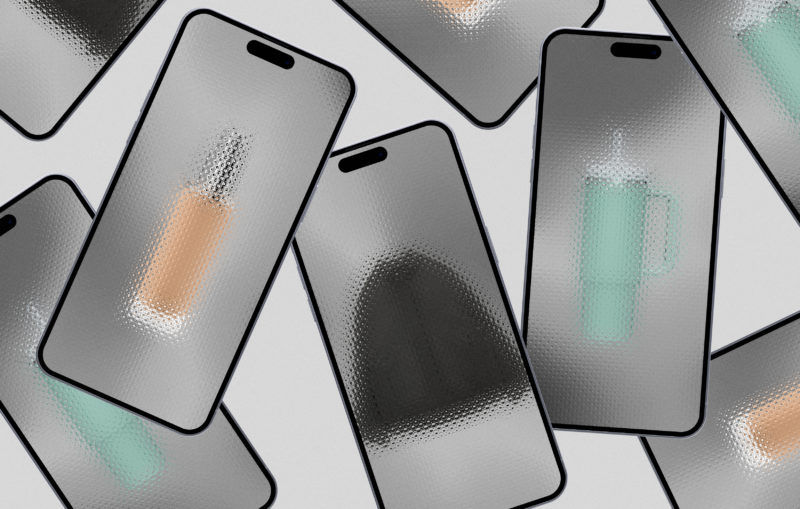Deinfluencing takes traditional content creation, which leans heavily on promoting products, and flips it on its head. Here’s why authenticity is trendier than ever.
Social media influencers are the modern-day arbiters for what’s hot and what’s not. Whether that’s convincing you that you can’t live another day without a pair of adidas Sambas or Mikayla Nogueira’s L’Oréal mascara controversy had you racing to the drugstore to grab your own tube, the sway that content creators like Alix Earle, Glamzilla and Matilda Djerf have cannot be understated. They have huge followings — and the power to create hype that sells out products instantly.
RELATED: Should We Really Expect Honesty from Beauty Influencers?
But the tables have turned — if you’ve been on TikTok in recent months, you’ve surely seen “deinfluencing” videos on your “For You Page” where creators explain why they think you shouldn’t buy certain products. Here, we dive into the deinfluencing trend, how influencers can use it to their advantage, and what it might mean for the future of content creation.
What is deinfluencing?
Deinfluencing videos continue to go viral for doing the literal opposite of traditional influencer videos that promote fashion, beauty, wellness and home products. Instead, these posts try to convince viewers not to buy buzzy items, often while promoting more cautious spending habits.
@kayli.boyle def gonna be taken off a lot of PR lists after this🤠 #hairtok #skincare #makeup #deinfluencing ♬ original sound – kayli
The hashtag #deinfluencing has over 484 million views on TikTok and counting on videos cautioning people against buying products they felt didn’t live up to their expectations. Popular beauty goodies like the Makeup by Mario SurrealSkin foundation, wellness products like Bloom Nutrition’s Super Greens powder mix (you know the one that almost every morning routine or “get ready with me” video starts with), the omnipresent Stanley cup and the viral Zara bomber jacket are examples of goods that were rabidly popular — and now heavily deinfluenced.
Deinfluencing has sparked conversations about waste and overconsumption. The resounding message is this: Brands will continue to drop new releases, influencers will promote products (including ones they don’t truly love, but more on that in a bit), and you don’t need to buy into the hype every time.
@eliseeatsplants considering that the rare beauty blushes each last a lifetime, you may not need 6 of them #deinfluencing #makeup ♬ original sound – elise maria
“I didn’t realize how weird and abnormal [it is] to have 17 different blushes that are all the same colour,” says TikToker Elsie Maria in her de-influencing video about how normalized rabid consumerism is. “ I didn’t think about the long-term effects.”
A response to a looming recession
The prevalence and longevity of deinfluencing is also symbolic of the reality of a potential economic recession and suggests it’s a response to people being more aware of how they spend their money. According to the CBC, consumers and businesses are expecting a recession this year, and with rising inflation rates and cost of living, consumers are cutting back on spending.
@thejennaromano Deinfluencing Happening in Influencer Marketing (Prediction) #deinfluencing #deinfluencingmakeup #influencermarketing #influencer #influencermarketing #influencermarketingtip #influencers #contentcreators #contentcreatorsoftiktok ♬ original sound – Jenna | The Autistic CEO
In her video, TikToker Jenna Romano says, “in a recession, the ‘nice to have’ products and ‘need to have’ products become more distinguished.”
“This trend is great, especially during this time when we are about to enter a recession and many are searching for ways to decrease their discretionary spending,” Danica Nelson, a lifestyle and personal finance content creator and senior product marketing manager at Shopify, tells FASHION.
“Does one really need the Stanley bottle when you already have five perfectly functioning water bottles at home?” Nelson adds. (The answer, of course, would be no.)
What deinfluencing means for influencers and brands
The deinfluencing trend relates to discussions of authenticity and transparency between content creators and their audience. Not every new product actually deserves an audible gasp. People tend to build deeper connections with content creators who are relatable and honest, rather than those who always post positive reviews or share snapshots of their always-perfect lives, according to Nelson. “People tend to gravitate to creators that commit to being transparent and those that don’t solely focus on the highlights, butterflies, and rainbows of life,” says Nelson. Ultimately, authenticity is more on-trend than ever — and deinfluencing is a strategy that content creators can use to build trust with their audiences.
Deinfluencing actually provides highly valuable information to brands, and potentially presents new marketing opportunities. “It would be a gigantic missed opportunity if brands weren’t actively paying attention to their products being deinfluenced and criticized on social media.” It’s a blessing in disguise, because these videos are “valuable customer feedback and insight that companies would typically need to run costly and time-consuming research studies to get access to,” says Nelson.
In Nelson’s view, deinfluencing doesn’t signal the end of the influencer era, but rather an opportunity for consumers, influencers and brands to re-evaluate marketing and consumption habits. “In an age where almost everything is an ad and people are becoming more easily influenced by products and services they see advertised on social media, this deinfluencing trend is a refreshing perspective that encourages folks to see through the hype,” says Nelson.
After all, makeup expires. Trends come and go, and come back again (hello, rosettes). The pressure to keep up with the latest viral products is unrelenting and deinfluencing is a welcome reminder to be as intentional as ever with our purchases.
